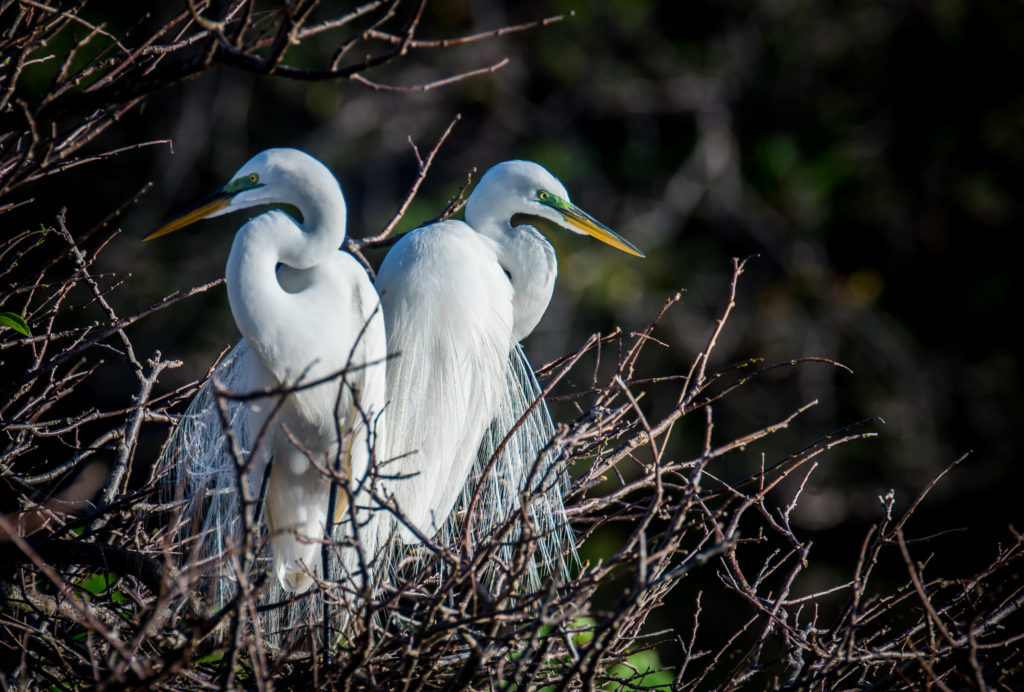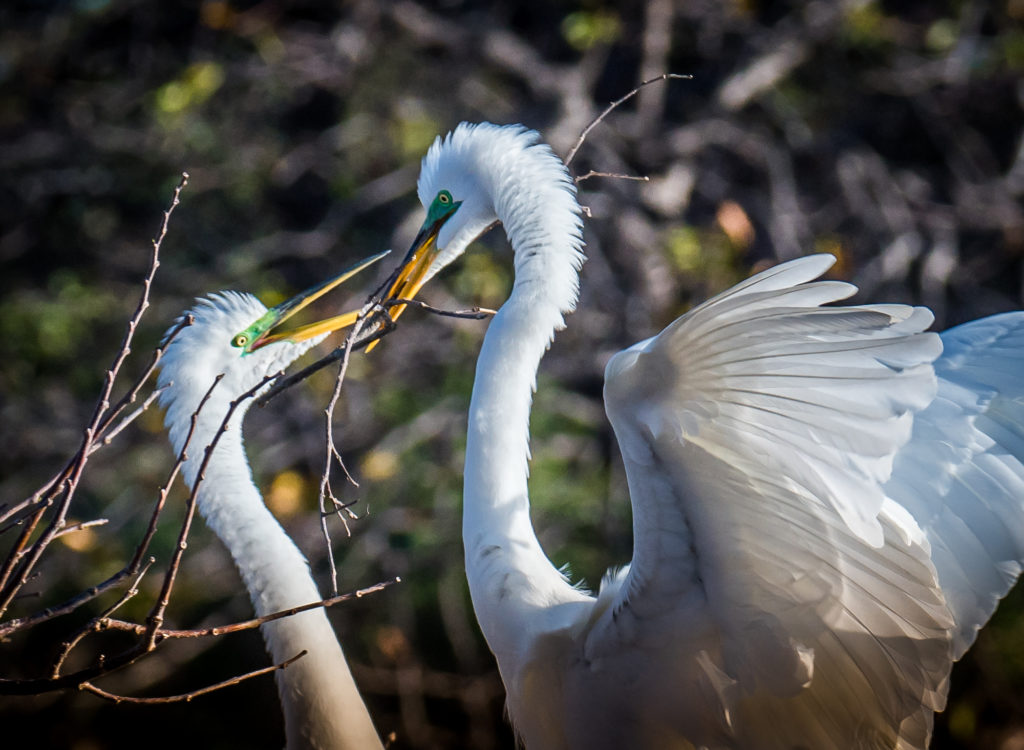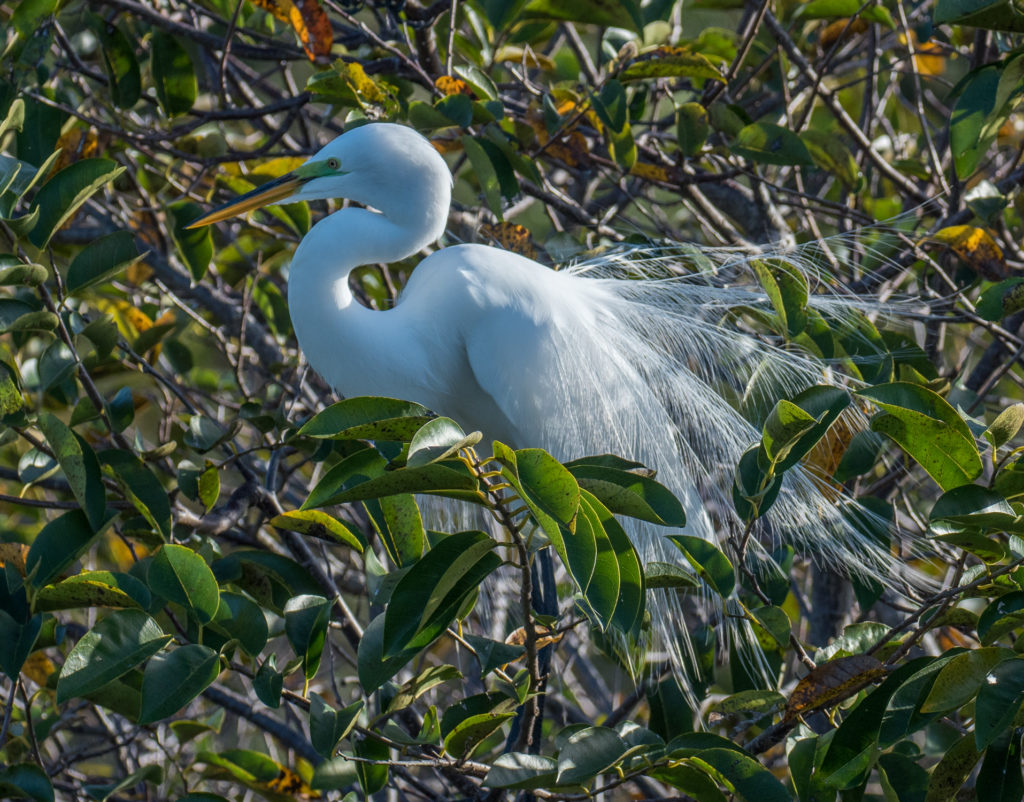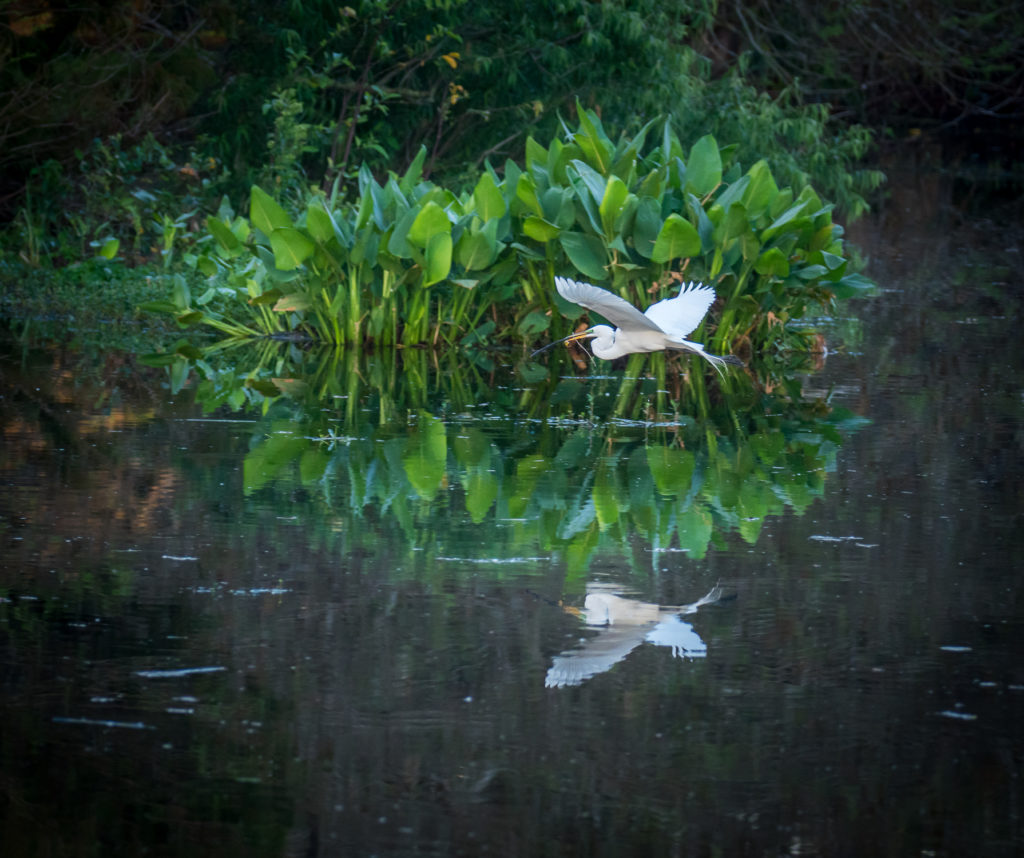
The spectacular plumes of the Great Egret (grown only during its breeding season) makes this a wonderful but challenging photographic subject. Wonderful, because the long plumes of white create a delicate crown of texture surrounding this regal bright white creature. Challenging, because the body of the bird is so bright, that photographer’s must use a few tricks to create a perfect image.

But first, here’s some important history: A demand for victorian style plume decorated hats in the late 1800’s inspired hunters to kill ninety five percent of all Great Egrets in America. Outraged conservationists , established The National Audobon Society with a first mission to lobby for legislation banning plume hunting. They succeeded in 1910 and we have them to thank for the return of this remarkable species! And, yes, the Great Egret is the also the organization’s logo.
The Great Egret’s breeding season is January through March.
They are abundant in South Florida wetlands and build nests in the top of mangrove islands often in the company of many other bird species including Spoonbills, Anhingas and other herons. Note, they are members of the Heron family. The male flys about the marsh, collecting long twigs, and brings them back to the female. Together they build the nest, and about 50 days after one to six eggs are laid, the nestlings learn to fly. During this fifty day period, photographer’s can capture the action, and create dramatic portraits, provided they learn to “expose for the highlights” of this brightest bird of the land.

Start by planning your photo tour at dawn. The lower the sunlight, the less contrast you will have to deal with. (Also the Egrets are most active the first hours after sunrise) Aim your telephoto, meter your shot and underexposing two to three full stops, so that the bright wings are not “blown out” and detail is present in your digital capture. After your first images, you should check your histogram, to make sure there is no highlights clipping on the far right side of the histogram box. Yes, the captures will look very dark on your playback viewfinder, but this athe way its got to be for now. I have to back up a bit and say its best to shoot in RAW, so you have large files to work with, and keep your camera on its manual setting—so you can make the fine adjustments that make the difference between an intermediates’ capture and a professionals.

I teach everyone to think like and become a professional.
Back home in front of the computer, using Lightroom, one can open up shadows, dim highlights to retain detail and manipulate the “black point” to get a perfect exposure.
This is certainly a best case for learning to use the “local adjustments” brush. I teach this technique in my Photo Masters Workshops for shooters of all abilities and run one and three day sessions from January through March in Palm Beach County Florida. See https://photomastersworkshops.com/workshop/floridas-fabulous-birds/
If you’d like to know more, I invite you to email me directly:
